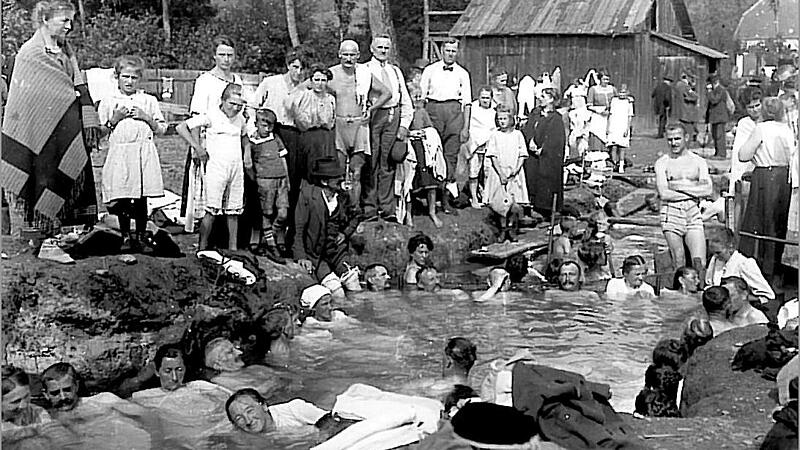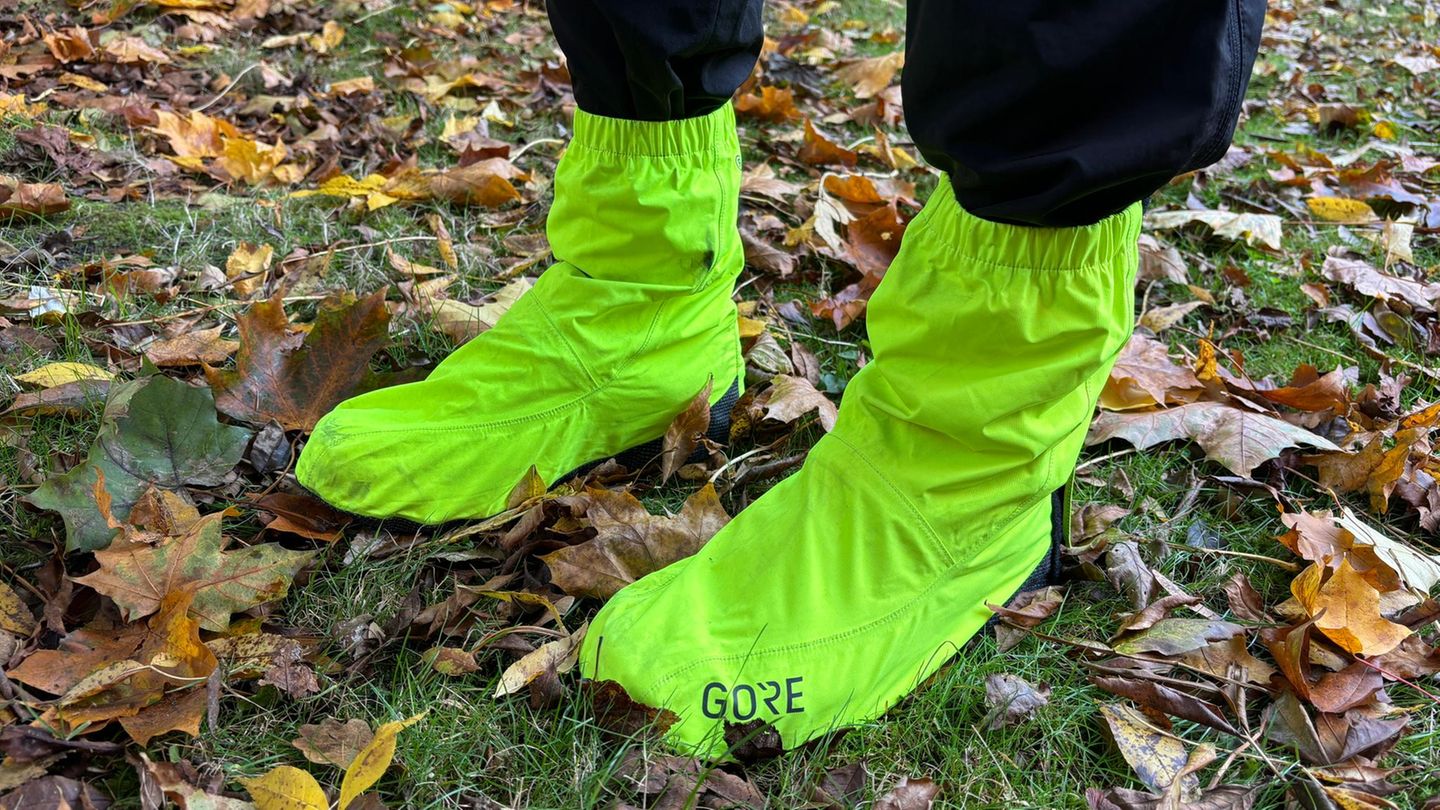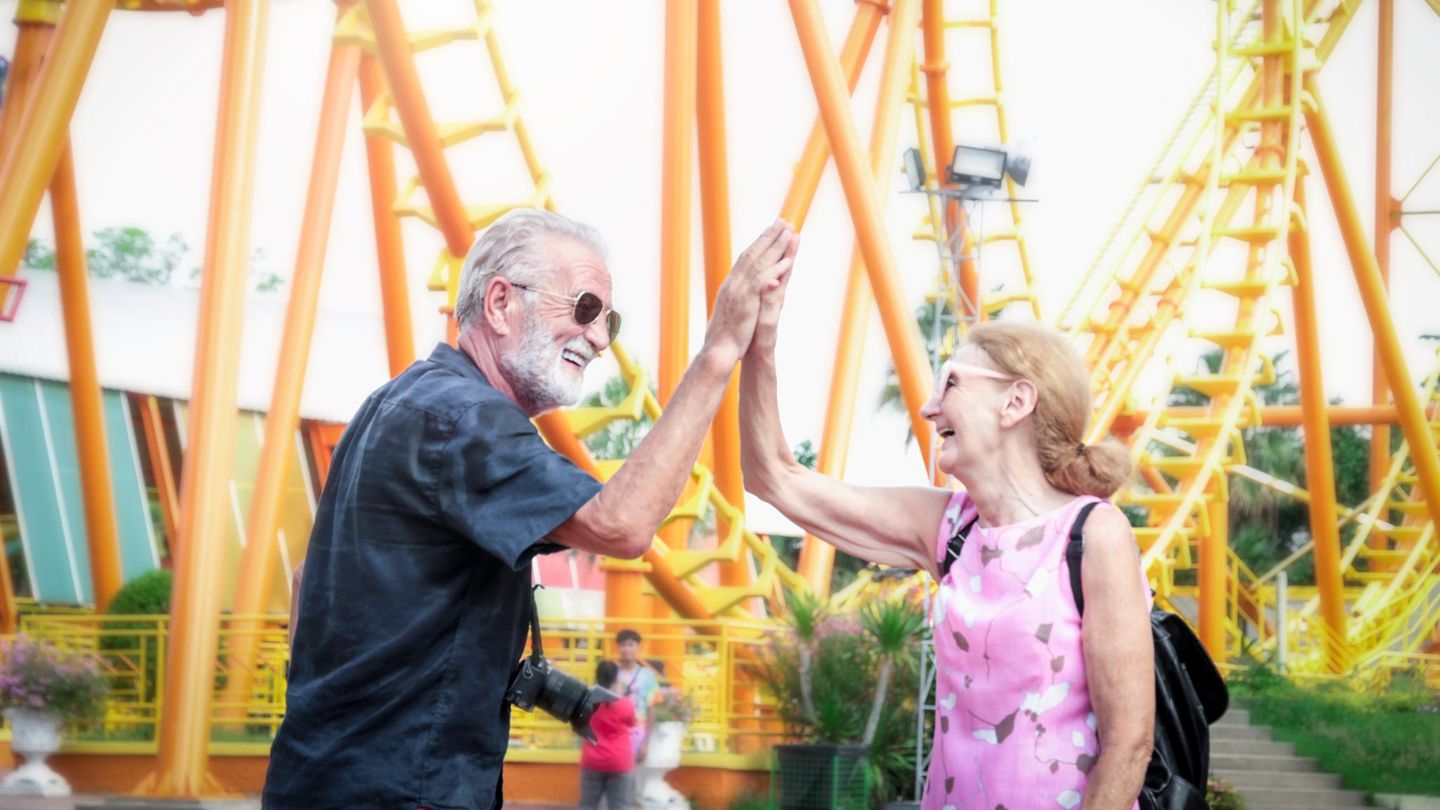They looked for oil, but found water: in 1918, the first thermal spring was discovered under Schallerbach – then still a part of the municipality of Schönau – during oil drilling. Schönau was appointed a health resort by the Upper Austrian state government in April 1924. Since then, tourism has had a significant impact on Bad Schallerbach. In his lecture “You can’t see those in the dark” on March 8th at 7 p.m. in the Bad Schallerbach parish hall, journalist Martin Kranzl-Greinecker traces the development of the health resort. “For me it’s not about judging, but rather showing people lesser-known aspects of history,” says Kranzl-Greinecker. To prepare, he interviewed older people from Schallerbach and Schönau. Their memories flow into Kranzl-Greinecker’s lecture, in which he tells the community’s history on a large and small scale.
From today’s perspective, the six years from the discovery of the spring to the designation of a spa seem quite short. “Contemporary reports, including those from the Tagespost, complain about the slow economic development,” says Greinecker. In 1918, the sulphurous thermal water from 461 meters was initially a nuisance: Since the spring could not be closed, it was diverted into a ditch. But people soon began to bathe in the pools of water that were created. “People have noticed that the water has a beneficial effect, especially for rheumatic diseases,” says Kranzl-Grenecker.
The construction boom of the 1920s
Calls for commercial use quickly grew louder, and the first bathhouse opened in 1922. A construction boom began. “Until then, Schallerbach was an insignificant part of the small community of Schönau. The town center as we know it today only emerged then,” says Kranzl-Greinecker. Pensions and spa homes sprouted up, and the town hall also dates from this time. “From then on there was actually a constant upswing, also with great efforts from the local population,” says Kranzl-Greinecker.
The development, which the state government took into account by designating it as a health resort in 1924, also had an impact beyond the municipal boundaries: “The neighboring community of Wallern was the more important place, in Schallerbach there was practically nothing. The train station was on the Wels-Passau line, which opened in 1861 “Already back then at the current location in the Schallerbach area, it was only called Wallern and not ‘Schallerbach-Wallern’. An incredible amount has happened in the entire identity of the place and in the regional structure,” says Kranzl-Greinecker.
Bad Schallerbach received its current name in June 1938 after Austria was annexed to the German Reich – the National Socialists also took over the health resort. “This section is perhaps less well-known, but that is also part of the local history. Bad Schallerbach became a military hospital. Posters from the time talked about the ‘Spa der Ostmark’,” says Kranzl-Greinecker.
But the community also flourished in the post-war decades. “At the end of the 80s it was noticed that spa tourism was declining. However, those responsible in Bad Schallerbach recognized the signs of the times and increasingly focused on wellness and individual tourism,” says Kranzl-Greinecker. A development that resulted in the opening of the modern Eurotherme Bad Schallerbach in 1995.
Event tip: Lecture “You can’t see those in the dark” on March 8th, 7 p.m., in the Bad Schallerbach parish hall.
My themes
For your saved topics were
new articles found.

info By clicking on the icon you can add the keyword to your topics.
info
By clicking on the icon you open your “my topics” page. They have of 15 keywords saved and would have to remove keywords.
info By clicking on the icon you can remove the keyword from your topics.
Add the topic to your topics.
Source: Nachrichten




